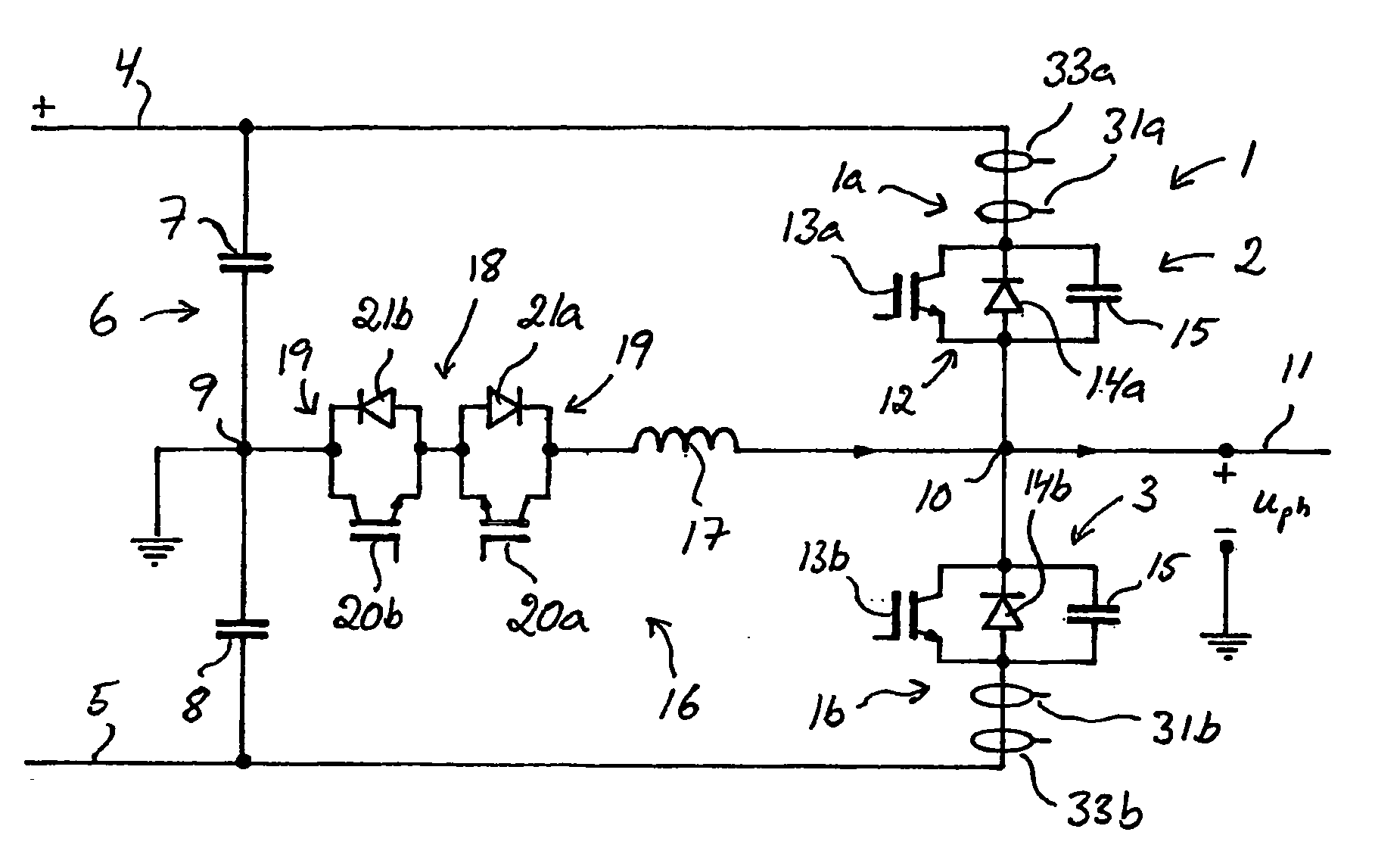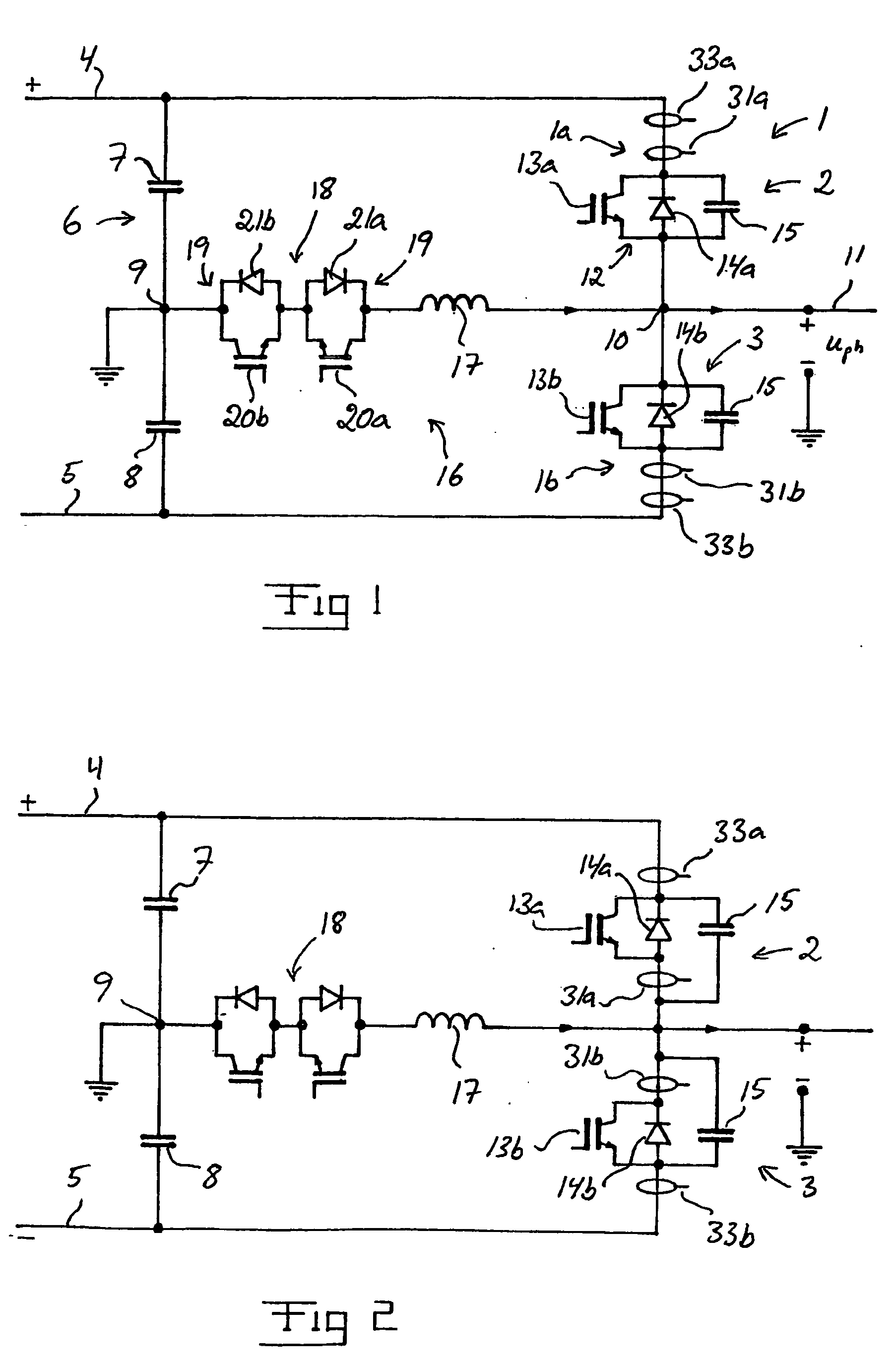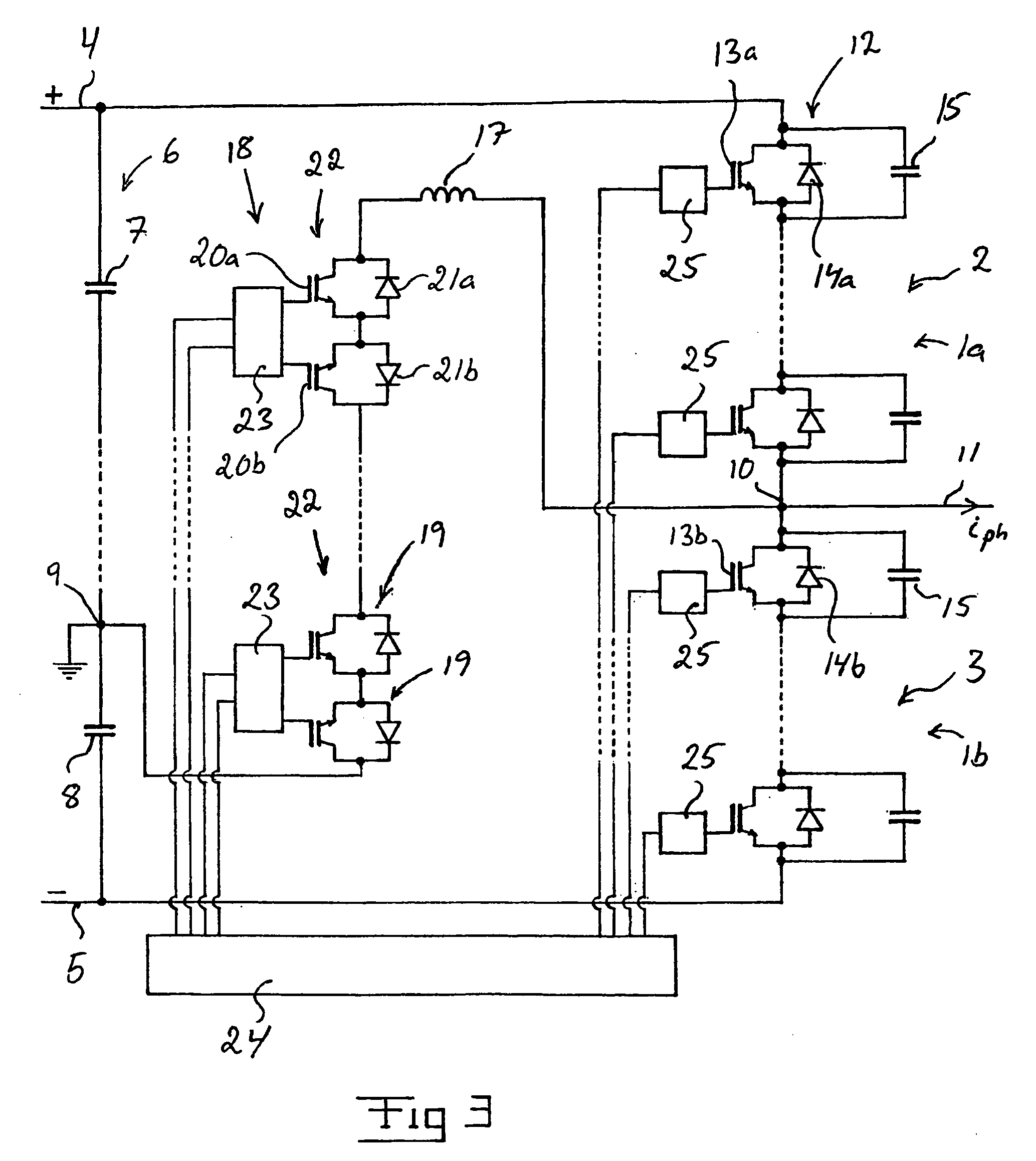Converter and a method for controlling a converter
a converter and converter technology, applied in the field of converters, can solve the problems of difficult and often impossible to turn off the converter, short-circuit current, etc., and achieve the effect of efficient and rapid detection of short-circuit curren
- Summary
- Abstract
- Description
- Claims
- Application Information
AI Technical Summary
Benefits of technology
Problems solved by technology
Method used
Image
Examples
Embodiment Construction
[0027]Converters according to different embodiments of the invention are illustrated in FIGS. 1–3. The respective converter is here a so-called VSC-converter. In FIGS. 1–3, only the part of the converter that is connected to one phase of an alternating voltage phase line is shown, the number of phases normally being three, but this may also constitute the entire converter when it is connected to a single phase alternating voltage network. The shown part of the converter constitutes a so-called phase leg, and a converter adapted for instance to a three-phase alternating voltage network comprises three phase legs of the type shown.
[0028]The phase leg of the converters 1 illustrated in FIGS. 1–3 has two current valves 2, 3 connected in series between the two poles 4, 5 of a direct voltage side of the converter. A direct voltage intermediate link 6 comprising at least two so-called intermediate link capacitors is provided between the two poles 4, 5. In the illustrated converters, the in...
PUM
 Login to View More
Login to View More Abstract
Description
Claims
Application Information
 Login to View More
Login to View More - R&D
- Intellectual Property
- Life Sciences
- Materials
- Tech Scout
- Unparalleled Data Quality
- Higher Quality Content
- 60% Fewer Hallucinations
Browse by: Latest US Patents, China's latest patents, Technical Efficacy Thesaurus, Application Domain, Technology Topic, Popular Technical Reports.
© 2025 PatSnap. All rights reserved.Legal|Privacy policy|Modern Slavery Act Transparency Statement|Sitemap|About US| Contact US: help@patsnap.com



